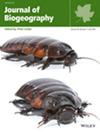The continuous development of statistical tools applied to ecology has contributed to great advances for modelling species' niches and distributions from opportunistic observations. However, as these observations are subject to biases caused by spatial variation in sampling effort, ecological niche models (ENMs) are also frequently biased. Among several bias correction methods that have been proposed, spatial filtering—imposing a minimum distance between occurrences—is widely used, yet lacks clear guidelines for choosing the filtering distance. Here, we aimed to explore the impact of spatial filtering distances on the performance of ENMs.
Europe.
Virtual species.
We applied ENMs to two virtual species with contrasting levels of specialisation, across a spectrum of modelling conditions, bias types and sample sizes.
Models applied to the specialist species had on average a lower performance than those applied to the generalist species. Using a biased sample reduced model performance, especially when the bias was strong, and when the sample size was large. In many cases, spatial filtering failed to improve model performance or even reduced it. We did find an improvement for the generalist species modelled with large and strongly biased datasets. However, there was no optimal filtering distance, as this improvement was linearly and positively associated with filtering distance. Moreover, because the initial bias was strong and the filtered dataset became very small, the resulting models had only very low accuracy.
Our results suggest that there is no optimal filtering distance for dealing with sampling bias in ENMs, and that spatial filtering never improves model performance enough to draw accurate predictions. We therefore recommend spatial filtering to be employed cautiously, only when enough data are available, and bearing in mind that its effectiveness remains highly uncertain.



